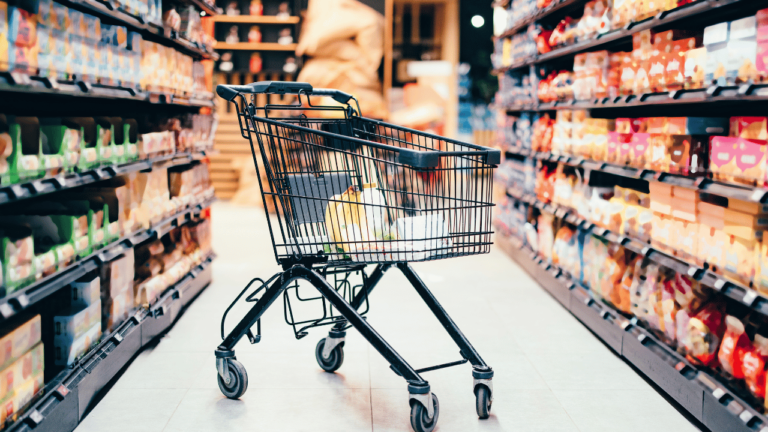What Caused the Food Shortage?

Food shortages have increasingly dominated headlines, casting a shadow over global stability and food security. This multifaceted crisis stems from a confluence of adverse factors—economic, environmental, and logistical—each exacerbating the struggle to meet growing demand. Understanding these complex causes reveals a tangled web of influences that challenge our ability to ensure a steady food supply for everyone.
Economic Instability
Economic instability, marked by fluctuating market prices and inflation, has significantly impacted food availability. As economies struggle, purchasing power wanes, leading to decreased access to essential goods and exacerbating shortages.
Additionally, unstable economies often disrupt supply chains, creating inefficiencies that make it challenging to get food from producers to consumers. These economic hurdles hinder efforts to maintain a reliable and affordable food supply.
Climate Change
Climate change has profoundly affected agricultural productivity by altering weather patterns and increasing the frequency of extreme events. Severe droughts and floods disrupt crop yields, leading to reduced food production and escalating shortages.
Moreover, changing climates introduce new pests and diseases, further threatening crop health and agricultural output. These climate-induced challenges compound the difficulties of maintaining a stable food supply.
Supply Chain Disruptions
Supply chain disruptions, such as transportation delays and logistical challenges, have exacerbated food shortages worldwide. Interruptions in the supply chain hinder the timely movement of food from farms to markets, resulting in local shortages.
Furthermore, global crises, like pandemics, can strain supply chains by limiting workforce availability and transportation options. These disruptions create bottlenecks that worsen food scarcity.
Rising Production Costs
Increasing production costs, including rising prices for labor, fuel, and raw materials, have strained food production systems. Higher expenses make it more difficult for farmers to produce food affordably, impacting overall food availability.
In addition, these rising costs often lead to higher consumer prices, reducing access to affordable food and increasing food insecurity. The economic pressures on producers and consumers alike contribute to the food shortage crisis.
Population Growth
Rapid population growth intensifies the demand for food, placing immense pressure on agricultural systems. As the global population expands, the need for increased food production becomes critical, but supply often struggles to keep pace.
Consequently, high demand coupled with insufficient supply results in shortages and food insecurity. Addressing this issue requires strategies to boost food production and improve distribution systems.
Political Conflicts
Political conflicts and instability can severely impact food security by disrupting agricultural activities and trade. War and political unrest often lead to the destruction of crops and infrastructure, reducing food availability.
Moreover, conflicts can hinder international aid efforts and create barriers to food imports and exports. These political issues exacerbate food shortages and complicate efforts to provide relief.
Poor Agricultural Practices
Inefficient and unsustainable agricultural practices can contribute to reduced food production and shortages. Poor soil management, overuse of resources, and lack of innovation in farming methods diminish crop yields.
Additionally, inadequate investment in agricultural technology and infrastructure further hampers productivity. Improving agricultural practices is essential for meeting growing food demands and alleviating shortages.
Natural Disasters
Natural disasters, such as hurricanes, earthquakes, and wildfires, can devastate agricultural regions and disrupt food production. These events cause immediate damage to crops and infrastructure, leading to significant food shortages.
Furthermore, the recovery from natural disasters often takes considerable time, prolonging the impact on food availability. Effective disaster management and resilient agricultural practices are crucial for mitigating these effects.
Trade Restrictions
Trade restrictions and tariffs can obstruct the flow of food between regions, contributing to localized shortages. When countries impose barriers on food imports or exports, it can lead to supply imbalances and higher prices.
Moreover, trade disputes and protectionist policies can exacerbate these issues, making it difficult for affected regions to access essential food supplies. Addressing trade restrictions is vital for ensuring a stable global food supply.
Technological Limitations
Technological limitations in agriculture can restrict food production and exacerbate shortages. Inadequate access to advanced farming technologies and practices hampers productivity and efficiency.
Additionally, the slow adoption of new technologies can delay improvements in crop yields and food processing. Embracing innovation and investing in agricultural technology are key to addressing food production challenges.
Understanding these diverse causes sheds light on the intricate challenges behind food shortages. Addressing these issues requires a comprehensive approach, integrating economic, environmental, and technological solutions to ensure a stable and secure food supply for the future.






